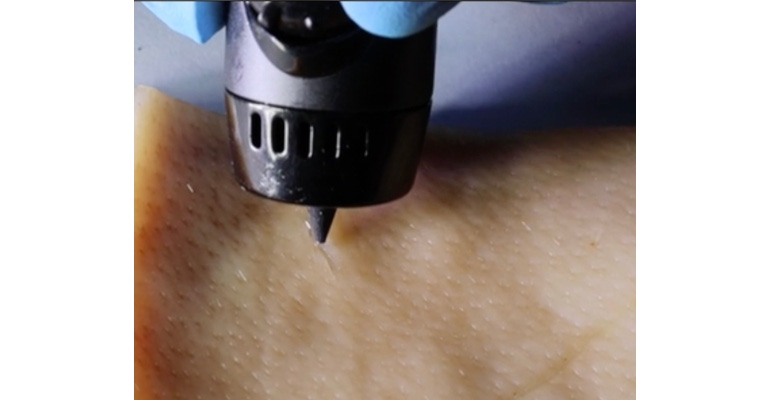3D-Printing System Can Speed Up Wound Healing
The PAINT system consists of a cellular-based, gel-like ink and a 3D-printing pen to apply the biomaterial to cuts and abrasions.
July 28, 2023

Scientists have been devising various ways to help speed up wound healing through technology, including 3D-printed blood plasma and seaweed-derived goo. Now researchers have developed a wound-healing 3D-printing system that allows a beneficial gel to be "painted" onto wounds to encourage the body to heal by exposing the cut to immune-system vesicles.
The name of the invention, which was developed by researchers in China, is in fact PAINT, which stands for “portable bioactive ink for tissue healing." Nanjing University researchers Dan Li, Xianguang Ding, and Lianhui Wang created the ink from the extracellular vesicles (EVs) secreted from white blood cells, which play important roles in promoting blood vessel formation and reducing inflammation during wound healing.
The system comprises not only the ink, which includes the cellular material, but also a 3D-printing pen. The latter can be used to spread the ink into a superficial wound of any shape to accelerate the healing process, the researchers said.
PAINT's ability to speed up vascular regeneration and thus the actual healing process is in contrast to the typical things currently done to promote recovery in a wound, such as cleaning, bandages, stitches, or even antibiotics. The first three promote the body's own natural healing process rather than augment it, and the fourth is primarily to stave off infection, the researchers said.
How It Works
The PAINT system's ink uses EVs secreted from macrophages combined with sodium alginate. "The technology … leverages bioactive M2 macrophage-derived EVs (EVM2) and a sodium alginate precursor, forming a biocompatible EV-Gel within three minutes after mixing, enabling it to be smeared on wounds in situ to meet diverse morphologies," the researchers explained in a paper published in the journal, ACS Applied Materials & Interfaces.
In experiments that the team conducted, the EVs promoted blood vessel formation and reduced inflammatory markers in human epithelial cells, shifting them into the “proliferative,” or growth, phase of healing, they reported. "The bioactive EVM2 reprogram macrophage polarization and promote the proliferation and migration of endothelial cells, thereby effectively regulating inflammation and enhancing angiogenesis in wounds," according to the paper.
The researchers tested PAINT on injured mice, where it promoted collagen fiber formation, according to the paper. In fact, mice treated with PAINT had almost healed completely from a large wound after 12 days, compared with mice that didn’t receive the treatment, who were not as far along in the healing process after this time period, the researchers reported.
The researchers anticipate that the PAINT system can be used in clinical settings to help heal a wide variety of cuts quickly and easily, without the need for complex or painful procedures, they said.
About the Author(s)
You May Also Like


